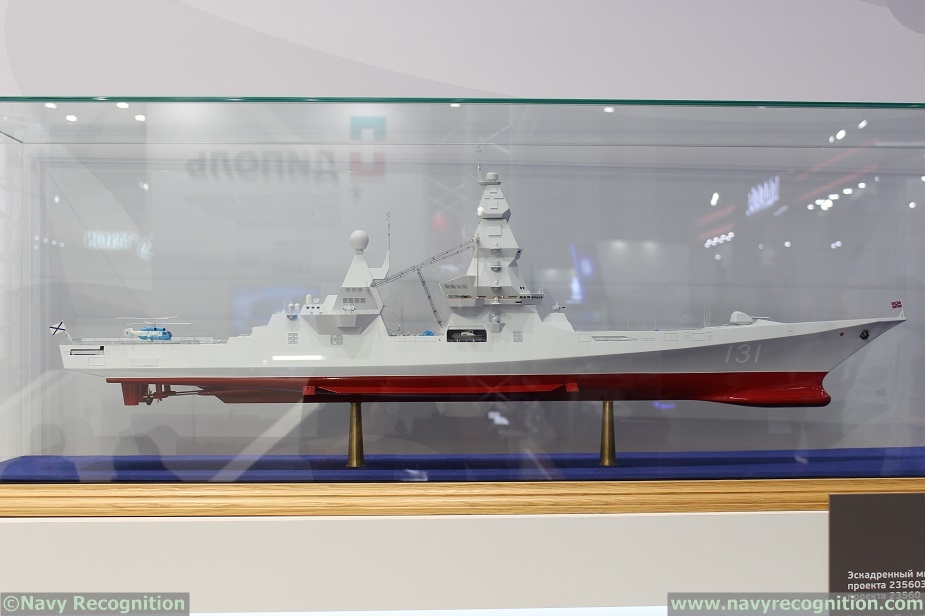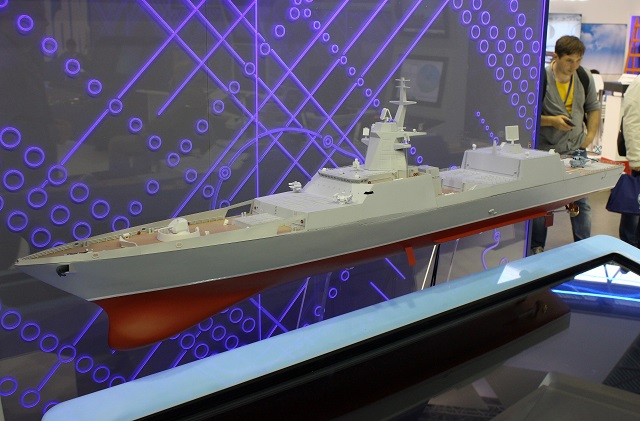The Russian Navy confirmed plans to build a key warship for the future of its fleet - a guided missile destroyer. The creation of the green-water warship has been discussed for long, but the project was permanently postponed. Expert Alexander Shishkin explains in the Vzglyad newspaper the problems with destroyer construction, which shipyards can build them and which weapons they would carry.

The construction of the Leader-class destroyer may begin after 2020, Deputy Navy Commander-in-Chief Viktor Bursuk said. It means reports about cancelled plans to build destroyers are only rumors. But there is no smoke without fire. Anyway, talks about the new destroyer remain talks for many years.
Initially the new destroyer was included into the Defense Ministry plan for 2013-2020 under the prospective arms item, acceptance into service and batch production by 30.12.2018 (the likely deadline for laying the first ship).
The annual statements of Severnoe Design Bureau (SPKB) said the design of project 23560 destroyer began in April 2015 and was completed hundred percent by the end of the next year. The technical project design was to begin in June 2016. However, the process dragged and was approved by the customer in July-August 2017. A pause followed in the creation of the warship. It was a pause, not the red light as Russia cannot have a proper Navy without the main green-water warship (like the army cannot exist without the main battle tank and the air force without a jet to win air supremacy). The destroyer project paused for two main reasons.
 Scale model of an improved Project 22350 frigate on display during IMDS 2017. Note the increased number of VLS cells, just in front of the bridge and in front of the helicopter hangar. It also features the new generation integrated mast of the same family as the one fitted aboard the new Project 20385 corvette. Picture by Curious via Forums.airbase.ru.
Scale model of an improved Project 22350 frigate on display during IMDS 2017. Note the increased number of VLS cells, just in front of the bridge and in front of the helicopter hangar. It also features the new generation integrated mast of the same family as the one fitted aboard the new Project 20385 corvette. Picture by Curious via Forums.airbase.ru.
Firstly, there were problems with frigate construction. Former shipbuilding department head of the Russian Navy Anatoly Shmelev said yet in 2005 that the plan of the Navy command supported by the fleet science was to create lead warships and begin with corvettes followed by frigates, destroyers and an aircraft carrier. The construction of corvettes is ongoing, but project 22350 frigates stalled.
The lead Admiral Gorshkov construction began 12 years ago but it has not been handed over to the Navy yet. Three other hulls are at the slipways, but not a single frigate has been laid since 2013 and will hardly be constructed despite statements of a series of six warships. An upgraded Gorshkov modification 22350M is now offered.
Little is known about it. The warship will have a bigger displacement and better weapons. It is likely to be a green-water ship (with over 5000-ton normal or standard displacement). Two shipyards may get the order for 22350M - Severnaya verf and Yantar in Kaliningrad. The arms program for 2018-2027 includes nuclear and non-nuclear submarines, frigates and brown-water warships, while green-water warships are postponed for 7-10 years.
Another major reason for the suspension of destroyer construction is the absence of proper facilities. The size of project 22350 is a secret. The displacement of 14000 tons was disclosed by former Deputy Defense Minister Yuri Borisov. It results in a length of 199 meters, width of 22.5 meters, the average draft of 6.8 meters (according to blueprint calculations comparable to missile cruisers of project 1164).
The covered slipways of Sevmash in Severodvinsk are fully loaded with project 995A SSBN, 885M SSGN and special-designation submarines. The Far Eastern Zvezda shipyard is unready, Zaliv in Kerch has not been upgraded. Yantar capabilities are limited by the size of the 170-meter long dock. The Baltic shipyard in St. Petersburg is dealing with nuclear icebreakers while the slipways of Severnaya verf allow building warships of the same length as Yantar.
Late last year Severnaya verf and Metrostroi signed a contract to build a two-slip facility of 250-140 meters in the first quarter of 2019. The work had to begin in April 2018 and satellite photos confirmed it. The new slip in St. Petersburg which has to initially produce two universal landing ships will answer the question where destroyers would be built. But accelerated construction of a batch for two fleets demands another facility which is likely to be Zvezda shipyard.
Link to Part 2 of this story (coming soon)
© Copyright 2018 TASS. All rights reserved. This material may not be published, broadcast, rewritten or redistributed.










